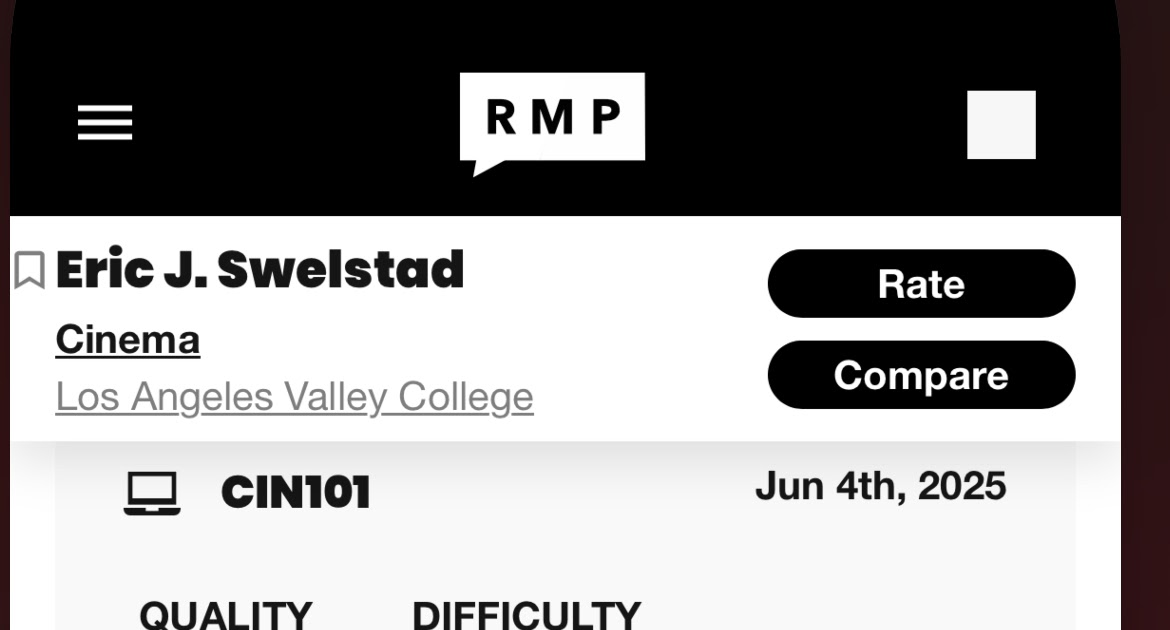When a crisis hits a school campus, communication can either save lives or contribute to chaos. Whether it’s a lockdown, severe weather, or a gas leak, the first moments matter most, and so does the ability to reach the right people instantly. For school leaders, this reality has turned the mass notification system for schools from a nice-to-have into a non-negotiable.
In today’s education landscape, safety isn’t just a responsibility; it’s an expectation. Parents demand it. Students rely on it. And legislation like the Jeanne Clery Act mandates it. From K-12 schools to sprawling universities, institutions are under growing pressure to prepare for emergencies. That means having a reliable, fast, and flexible way to communicate campus-wide emergencies across multiple platforms.
Mass notification systems (MNS) offer that capability. They enable school officials to send real-time alerts through text messages, emails, voice calls, desktop pop-ups, sirens, and public address systems, all from a single dashboard. But with so many systems available, selecting the right one can be overwhelming. Some platforms specialize in panic buttons and mobile alerts; others focus on layered communication and integrations with existing infrastructure.
The stakes are high, but the path forward doesn’t have to be murky. This guide will walk you through what a mass notification system is, why it matters for schools of all sizes, and how to evaluate your options with confidence.
What Is a Mass Notification System for Schools?
So, what is a mass notification system for schools? A mass notification system for schools is a platform that enables institutions to quickly inform students, faculty, and staff about emergencies or critical situations.
These alerts, sent via SMS, email, voice calls, app notifications, and digital signage, can communicate anything from severe weather and campus lockdowns to service disruptions and safety instructions from one central platform. This ensures rapid, widespread communication during emergencies.
They integrate with existing infrastructure such as fire alarms, intercoms, and digital signage to ensure every possible communication pathway is covered.
Schools often turn to systems like Rave Alert, Everbridge, Alertus, and Intrado Revolution, among others. These platforms are designed specifically for emergencies, but what if you had a tool that could do that and more?
How Do Mass Notification Systems Work?
Most MNS platforms are cloud-based and integrate with school databases or SIS (student information systems). Here’s how they function:
- Message Creation: Administrators draft a message through a web-based interface or mobile app.
- Audience Segmentation: Messages can be sent to specific groups (e.g., staff, students, grade levels).
- Multichannel Distribution: The system pushes the message across chosen channels simultaneously.
- Acknowledgement and Tracking: Some systems allow recipients to confirm receipt, and administrators can track who received what.
- Two-Way Communication: More advanced systems allow for replies and real-time updates.
Why MNS Is a Necessity, Not a Luxury
The need for several types of communication channels has made the need for timely notifications undeniable. In response, many universities adopted robust mass notification systems, and today, the Jeanne Clery Act mandates that all U.S. colleges maintain systems for timely warnings and emergency notifications.
In Canada, provinces like Ontario require school boards to implement emergency and lockdown procedures, which may include notification systems. Globally, ISO 22301 emphasizes communication strategies in business continuity planning, applicable to schools.
But this isn’t just a higher ed concern. K–12 schools face their own risks. And communication needs often extend beyond the campus to include parents and guardians.
Mass Notification Has Multiple Uses
Your mass notification system doesn’t have to be reserved for emergency use. It can and should be the most important part of your everyday communications strategy. Ensuring your mass notification system includes all of your main communications mediums like email newsletters, text messages, website alerts, and social media channels will allow you to do it all in one single platform, saving you time and streamlining your efforts.
Need to send your email newsletter, a text reminder, and a social media push all at once? There’s no reason you shouldn’t be able to do that using your mass communications system. Need to send a mobile app and website alert while you’re at it? You’ll save hours by having everything bundled in one mass notifications toolbox.
Think of it this way: your institution already collects valuable contact information, behavioral data, and engagement history through its CRM. That same infrastructure can power smarter alerting during a crisis. Instead of a generic campus-wide message, you could send tailored updates, like notifying only international students during a visa-related policy change, or alerting online learners about digital platform outages. It’s the intersection of immediacy and intelligence: delivering the right message to the right people, at exactly the right moment.
This synergy is especially relevant in higher education, where the line between operational communication and marketing is increasingly blurred. Institutions must build trust not just through promotional emails but also through reliable, timely updates that reassure students and their families. A CRM-integrated mass notification system supports both missions, emergency preparedness and ongoing relationship-building.
HEM’s Mautic CRM: Smarter Messaging in Every Scenario
Mautic by HEM allows institutions to segment their contact lists by criteria such as program, campus, or enrollment stage, ensuring each person gets the right message at the right time. The platform also supports multi-channel outreach; staff can send automated emails and SMS messages, all from one centralized system.
With features like workflow automation to schedule campaigns and trigger communications (for instance, event invitations or follow-up messages), a CRM like this can unify both emergency notifications and routine marketing outreach. In practice, that means a school could broadcast critical alerts to affected individuals during a crisis and also manage day-to-day communications with students or customers, all through the same integrated system.
Key Features to Look For
How do you decide which system is right for your school? The key is to carefully evaluate each option’s capabilities against your institution’s needs. Below, we outline the key features to look for when choosing a mass notification system for schools, and how those features play out in practice at schools and universities.
1. Multi-Channel Delivery
Not everyone will be reached by the same medium, so your system should use multiple channels at once. At minimum, it must support SMS/text, email, and voice calls, since one person might see a text first while another picks up a phone call.
More advanced systems go further, triggering alerts over public address speakers, digital signage, desktop pop-ups, and mobile push notifications. Using multiple channels in parallel provides redundancy to ensure your message gets through. If cellular service is down or a phone is silenced, a desktop or PA alert might still reach them.
Example: Harvard University’s Everbridge-powered Harvard Alert blasts out texts, emails, and phone calls to students and staff simultaneously.
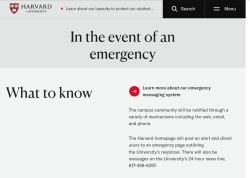

Source: Harvard University
2. Speed and Ease of Use
In a crisis, every second counts. The person sending the alert could be under extreme stress, so the interface must be very quick and simple to operate. Ideally, launching an alert should be as easy as pressing a single panic button.
Look for a system with an intuitive dashboard, pre-written templates, and minimal steps to send a message. If the process is too convoluted (requiring multiple logins or too many clicks), precious time will be lost.
One university learned this the hard way. It found that issuing an alert took nearly 30 minutes because staff had to activate separate systems for texts, emails, and PA announcements. Needless to say, that delay was unacceptable. The school eventually moved to a unified platform (the same Everbridge solution now used by the University of Michigan) so that one action triggers every channel at once.
Example: The University of Michigan employs the U-M Emergency Alert system (via Everbridge) to issue real-time emergency messages to students, faculty, and staff.
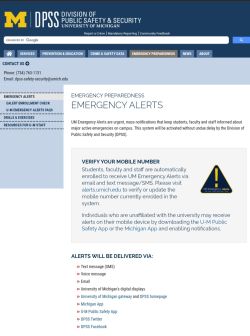

Source: University of Michigan
3. Integration Capabilities
Will the MNS play nicely with the technology your school already uses? The best platforms can plug into and leverage your existing infrastructure. For example, can it broadcast through your classroom intercoms and PA speakers, or trigger fire alarm strobes and door locks? Many schools have piecemeal safety tools that don’t automatically coordinate with each other. A strong notification system serves as the central hub to unify these.
Example: McGill University’s campus-wide alert system ties into multiple platforms already on campus, including a digital signage network (Omnivex), mass text/email alerts, and loudspeakers. This means one alert can simultaneously pop up on phones, computers, and PA systems across the university, rather than requiring separate actions for each.
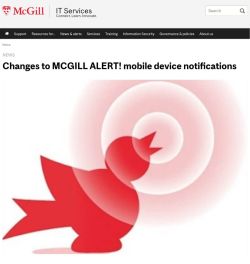

Source: McGill University
4. Audience Segmentation
Can you target alerts to specific groups or locations when needed? In some situations, you won’t want to blast everyone. The system should let you easily narrow the recipient list based on location or role.
For example, if a small chemical spill affects only the science building, you might alert just that building’s students and staff rather than the entire campus. Conversely, if you have multiple campuses, you may need to send a message only to one site. A good MNS supports both wide-area alerts and precise targeting.
Example: Hubspot’s SMS features offer personalized tokens, contact integration, and workflows, allowing schools to create targeted SMS campaigns and engage in live two-way personalized conversations.
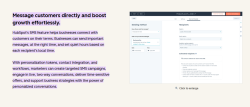

Source: UC Berkeley
5. Reliability and Redundancy
You need a system that works even when things go wrong. Ensure the provider’s network has redundant infrastructure (backup servers, multiple data centers) and built-in fail-safes if one communication mode fails.
For example, if text messages aren’t going through, can it automatically switch to another channel, like email or voice calls? On your side, plan for overlapping alert methods so there’s no single point of failure.
Example: HEM’s Mautic allows you to send notifications via text, email, and mobile app all at once, while the campus also uses sirens and PA announcements as backup.
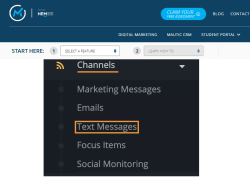

Source: HEM
6. Feedback and Acknowledgment
In an emergency, communication shouldn’t be just one-way. It can be very useful to get feedback or confirmation from recipients and to empower people on the ground to initiate alerts. Some mass notification systems for schools allow two-way interaction. For instance, letting recipients click “I’m Safe” in a mobile app or reply to a text to give their status. This helps account for people and gather instant feedback from the scene.
Equally important is a panic-button capability. Many schools now provide staff with a mobile app or wearable panic button that lets them trigger an emergency alert or call for help with one touch.
Example: University of Southern California’s emergency notification ecosystem is integrated with a smartphone safety application, known as the Trojan Mobile Safety App, powered by LiveSafe. This free downloadable app, managed by the USC Department of Public Safety and Emergency Planning, complements the TrojansAlert system by putting emergency assistance tools directly in users’ hands. Notably, the app includes a panic-alert feature in the form of one-touch emergency calling.
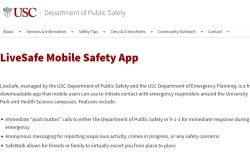

Source: University of Southern California
7. Administration and Security
Consider the management and support aspects of the system. You’ll want to control who can send alerts (and to whom). Robust platforms allow role-based permissions. For instance, limiting campus-wide alerts to senior officials while enabling more localized alerts by authorized staff. This ensures alerts can be sent out quickly but still securely by the appropriate personnel.
Data security is critical as well: the system will hold contact info for your students and staff, so it must safeguard that data and comply with privacy laws (such as FERPA or GDPR). Additionally, evaluate the vendor’s customer support and training.
Emergencies can happen anytime, so 24/7 technical support is highly desirable. If an issue arises at 3 AM, you’ll want immediate help. A good provider will also help train your team so everyone knows how to use the system effectively before an emergency occurs.
Example: The University of Washington uses a Rave-powered UW Alert system to manage communications for its large campus community. With tens of thousands of students and employees, UW relies on the system’s strong admin controls to ensure only authorized officials can send out mass alerts, and on the vendor’s support to keep the platform running smoothly.
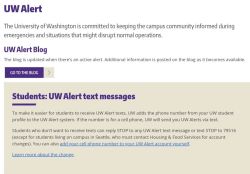

Source: University of Washington
8. Cost and Value
Prices vary. Some platforms bill per message or user, others charge flat annual fees. Don’t choose based solely on price. Focus on total value and required features, and check for educational discounts.
9. Scalability and Future-Proofing
As your school grows or tech evolves, your MNS should scale accordingly. Look for vendors with a proven track record of innovation and regular updates.
In a nutshell, what features should a good campus mass notification system include? A reliable campus notification system should have multi-channel messaging (SMS, email, phone, app alerts), easy integration with existing databases and software, real-time analytics and reporting, mobile accessibility, and role-based controls. Ideally, it should also allow for geotargeted alerts, two-way communication, and scheduled test alerts. These features help schools deliver timely, relevant updates during both emergencies and routine situations.
Why HEM’s Mautic CRM Is a Smart Choice for Mass Notification and Communication
Choosing a mass notification system is not just a technical decision: it’s a strategic one. That’s why many institutions are turning to HEM’s Mautic CRM, a powerful platform that blends emergency communication with everyday engagement, all in one intuitive system.
HEM’s Mautic isn’t just a marketing tool: it’s a communication hub designed for the complex needs of modern schools. Built specifically for educational institutions, it provides the flexibility and automation required to send the right message to the right person, at exactly the right moment, whether you’re dealing with an emergency or simply sending out a campus newsletter.
Unified Communication Across Channels
Mautic CRM allows schools to centralize their messaging efforts, supporting email, SMS, and in-app alerts from a single dashboard. In a crisis, that means no delays switching between systems, just fast, targeted communication when every second counts.
But its value extends beyond emergencies. With Mautic, you can schedule and automate routine announcements, manage event outreach, and nurture prospective students through personalized workflows, making it a powerful asset for both marketing and crisis response teams.
Segmentation and Personalization
The platform’s segmentation features let you target messages based on program, campus, enrollment stage, or any other custom criteria. This ensures your messages are always relevant, crucial when issuing alerts that may only apply to certain groups, buildings, or locations.
Need to notify only international students about a visa-related change? Or send an urgent weather alert to your downtown campus while leaving other sites unaffected? Mautic makes it easy.
Automation for Every Scenario
From workflow triggers to dynamic content, HEM’s Mautic helps schools automate communication with precision. For example:
- Trigger follow-up emails after an info session
- Send reminders about registration deadlines
- Automate alerts for emergency drills or test scenarios
These workflows can be adapted for both emergency preparedness and ongoing communications, creating a seamless experience for students, faculty, and administrators alike.
Easy Integration and Expert Support
HEM’s CRM integrates with leading SIS and web platforms, enabling real-time syncing of contact data and activity tracking. That makes implementation smooth and ensures your alert system always has up-to-date recipient information.
And because it’s backed by HEM’s education marketing experts, you get more than just software; you get strategic onboarding, training, and long-term support tailored to your institution’s needs.
Ready to Future-Proof Your School Communication?
Whether you’re managing crisis alerts or student outreach campaigns, HEM’s Mautic CRM delivers reliability, flexibility, and peace of mind. Join institutions that are redefining campus communication and doing it smarter.
Frequently Asked Questions
Question: What is a mass notification system for schools?
Answer: A mass notification system for schools is a platform that enables institutions to quickly inform students, faculty, and staff about emergencies or critical situations.
Question: What features should a good campus mass notification system include?
Answer: A reliable campus notification system should have multi-channel messaging (SMS, email, phone, app alerts), easy integration with existing databases and software, real-time analytics and reporting, mobile accessibility, and role-based controls.




